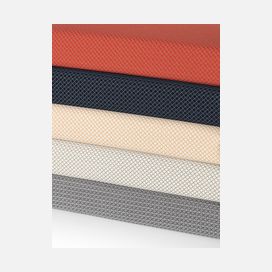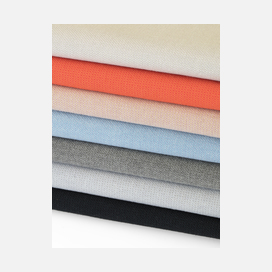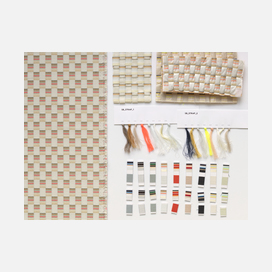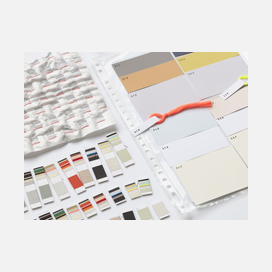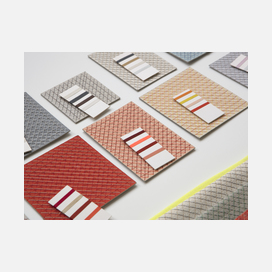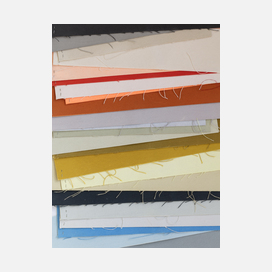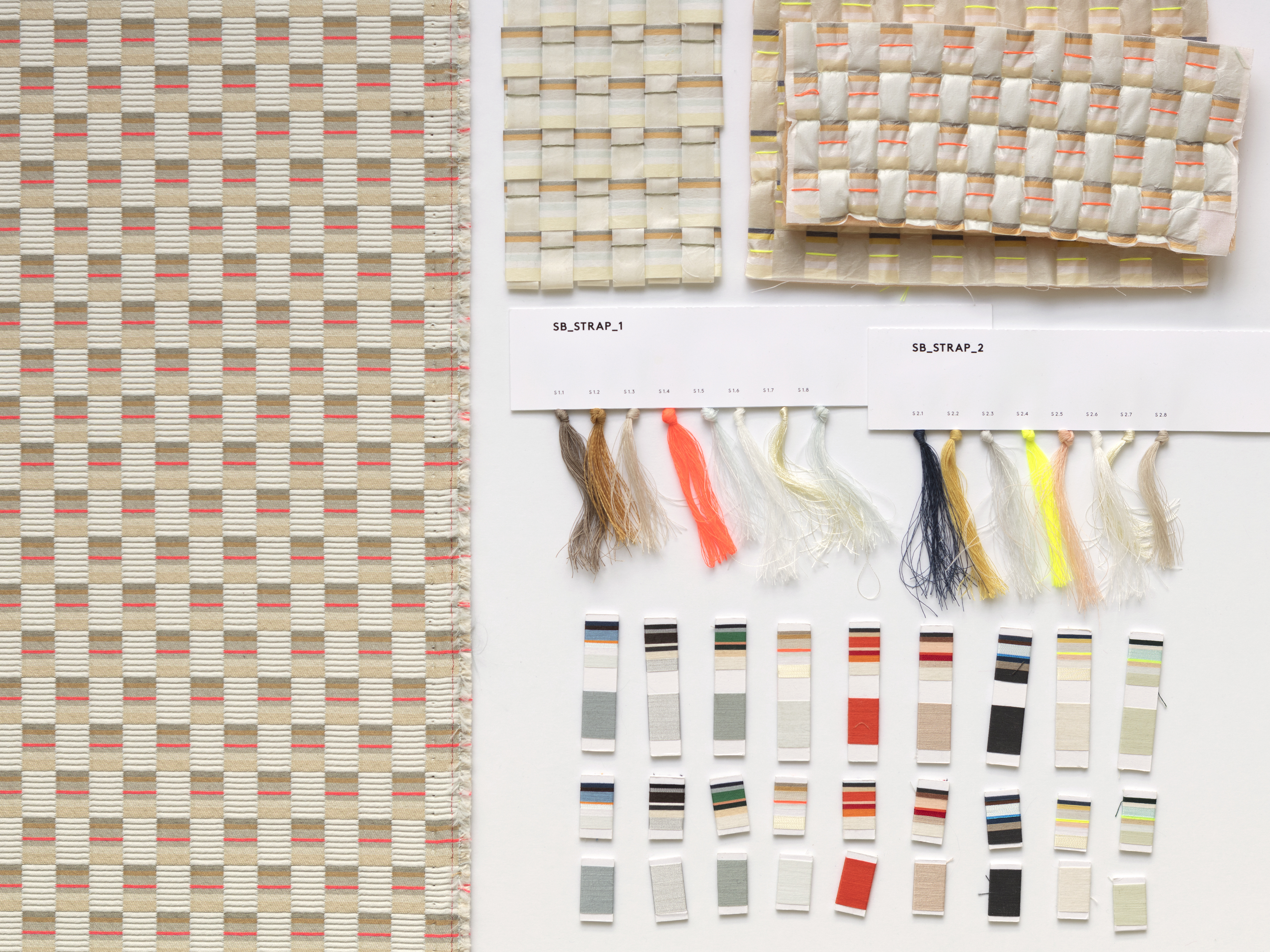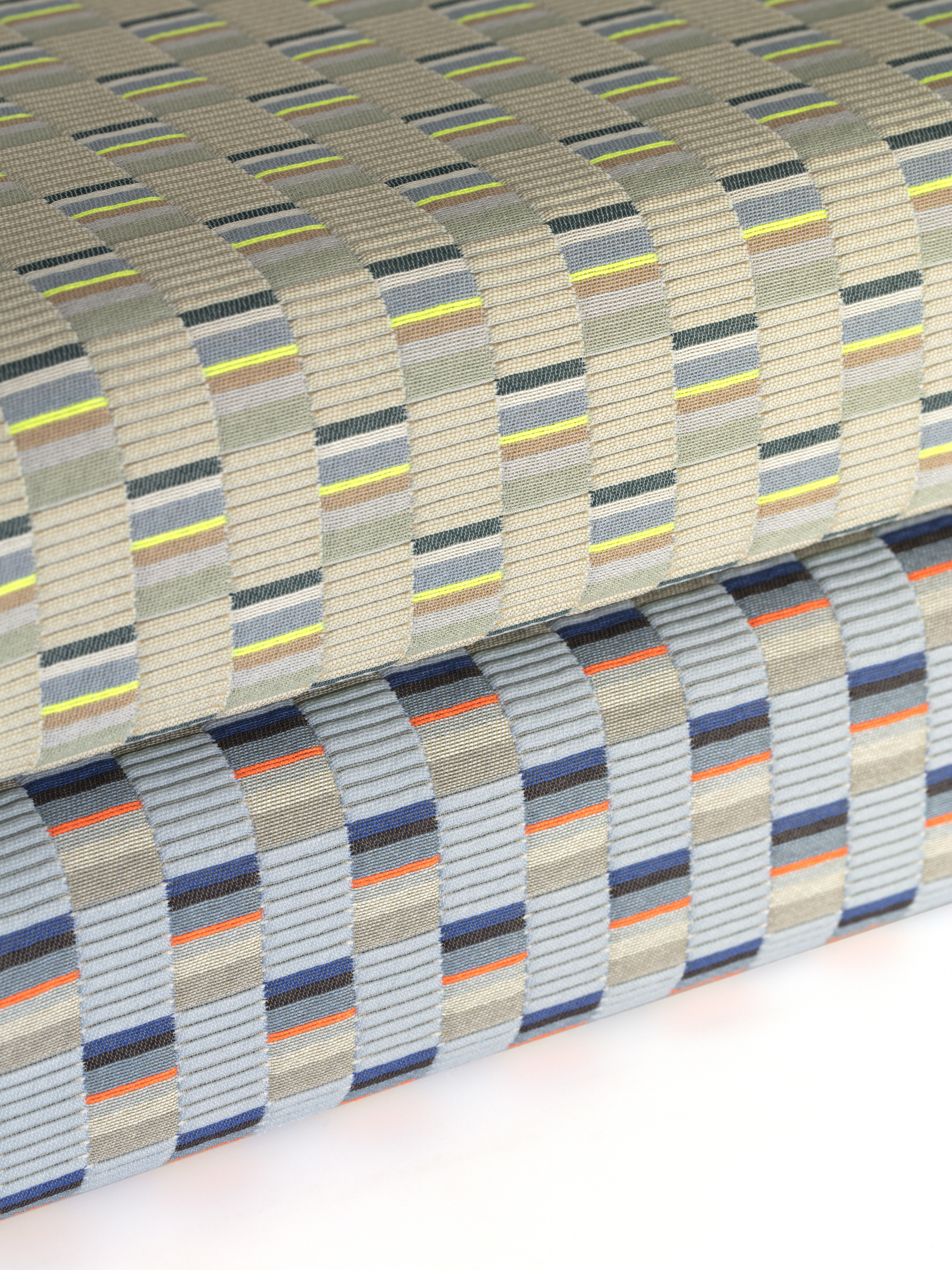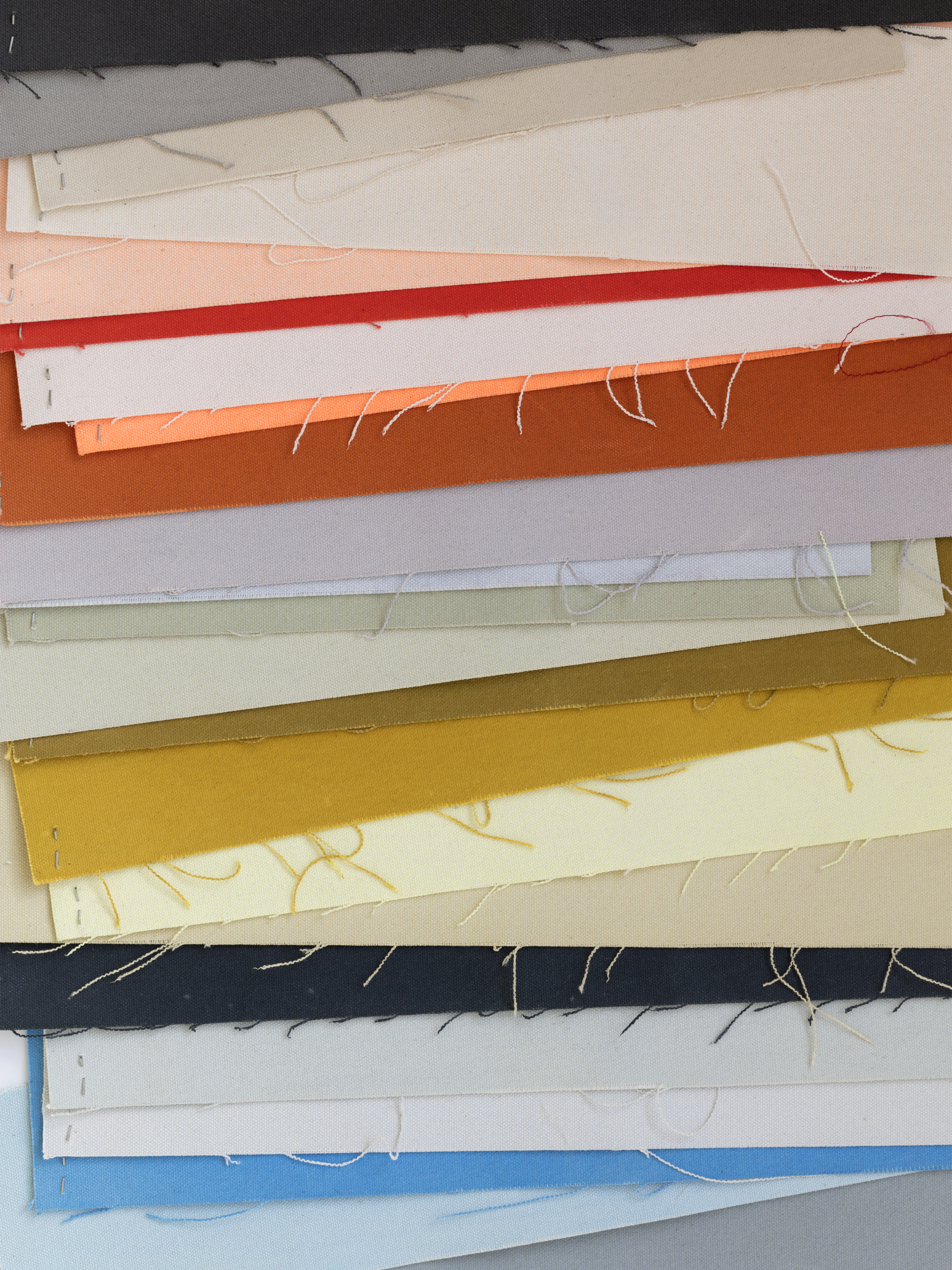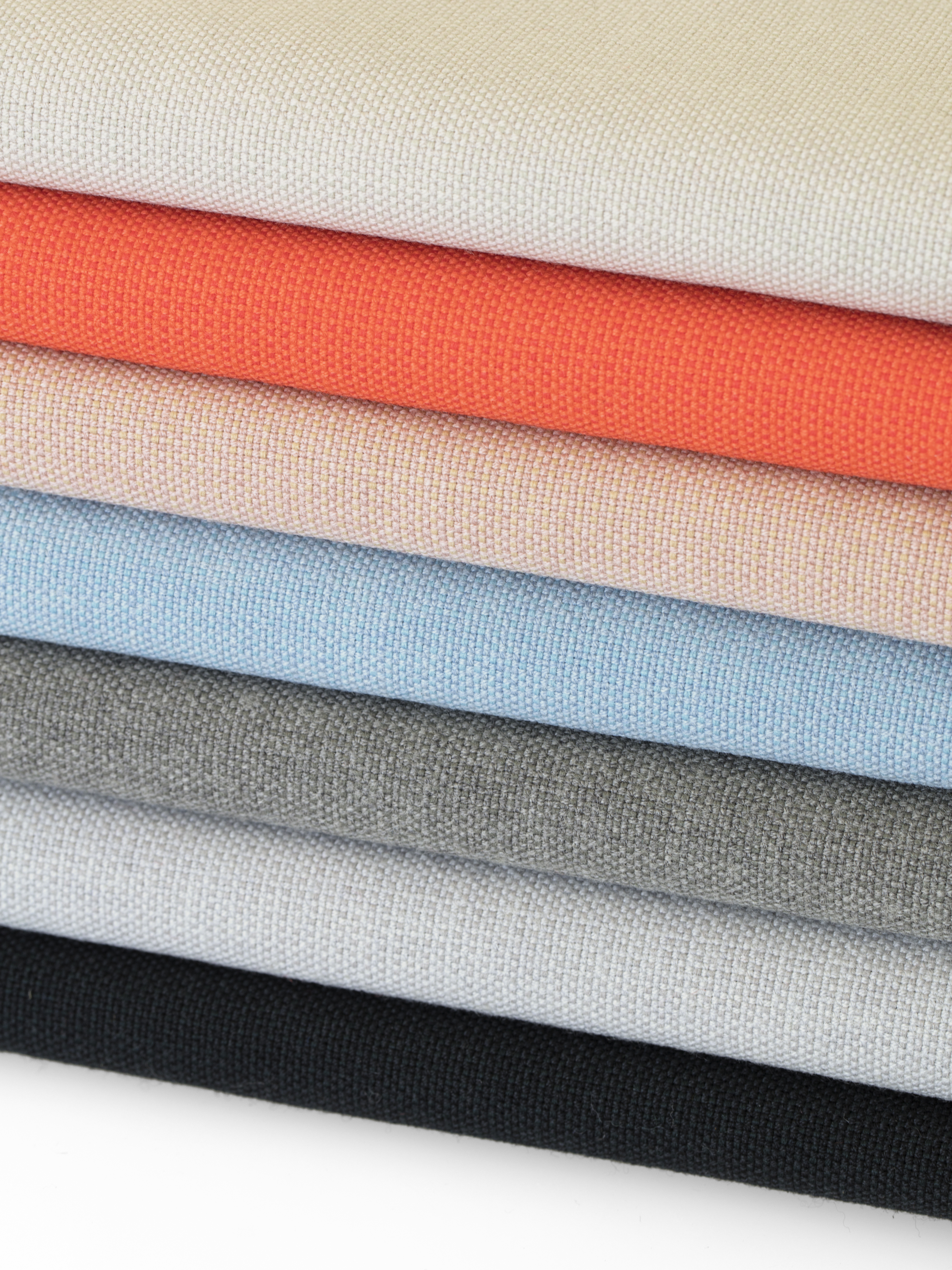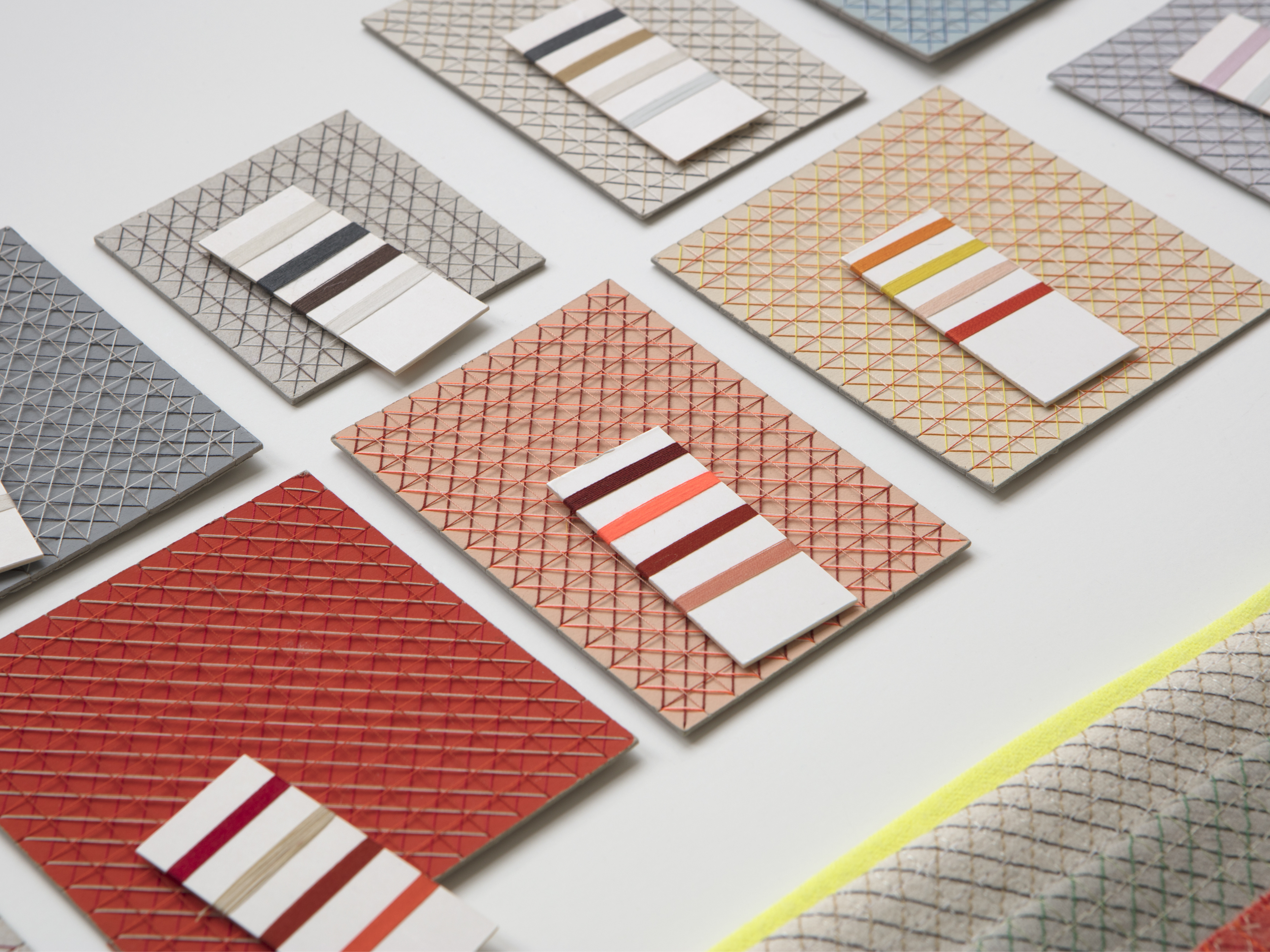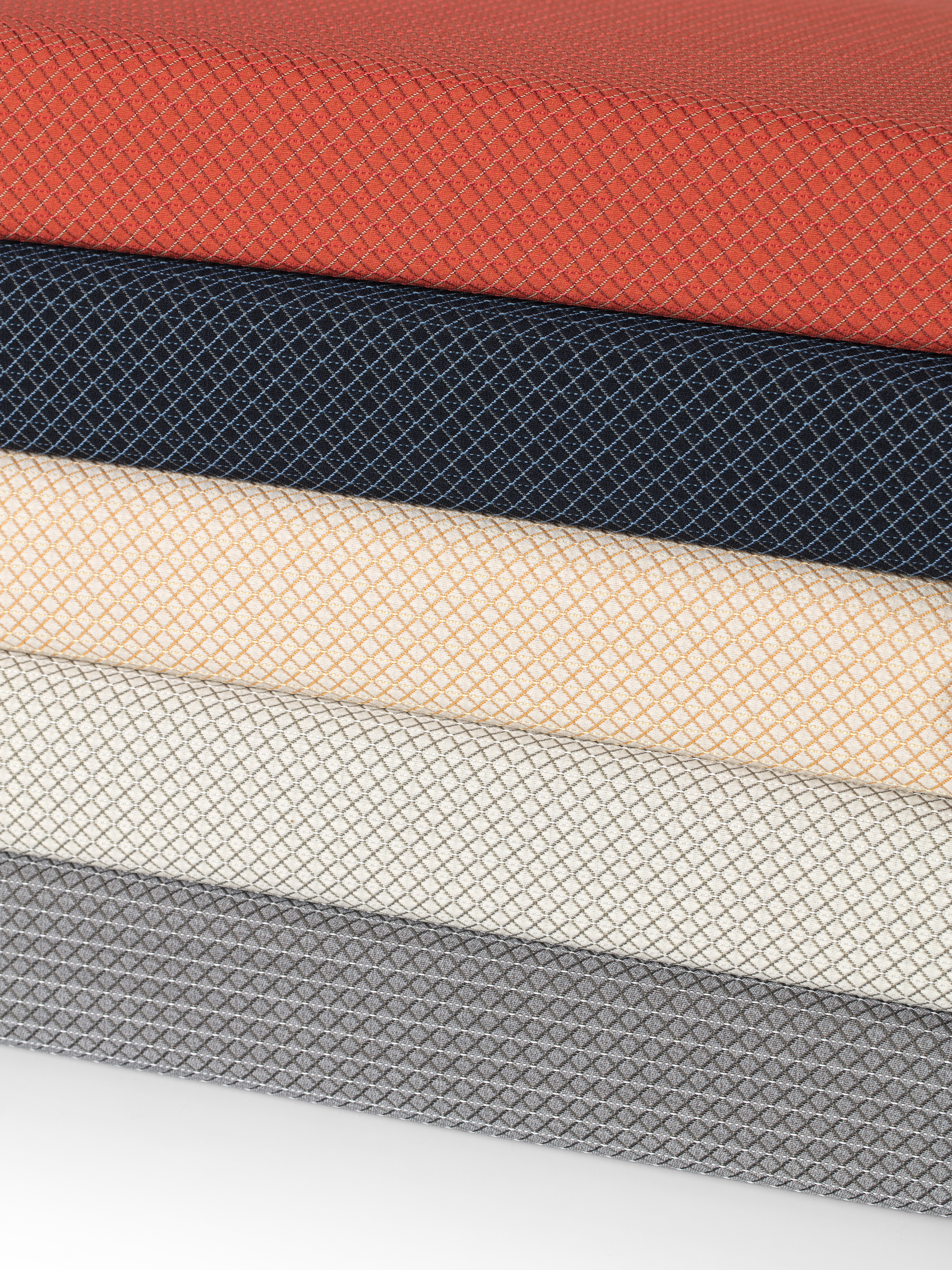Mesh, Tracery, and Pare are the third in a series of products designed by Scholten & Baijings in collaboration with Maharam. Reflecting the Dutch duo’s intent focus on nuanced color and refined geometric patterning, the new collection diverges from the expansive repeats of Blocks and Grid (2014) and the bold graphics of Bright Grid, Bright Angle, and Bright Cube (2015) in favor of more intimate surfaces that invite further observation.
The concept for Mesh derives from Scholten & Baijings’s Strap Chair (2014), which reinterprets 17th-century Dutch cane or woven chairs. Specially developed braided polyester straps are wound around the chair’s tubular frame in a striped, light-to-dark arrangement, producing harmonious combinations of hues. Likewise, Mesh’s animated surface features a modified checkerboard pattern wherein rectangles of ribbed texture alternate with smooth stacks of compact color punctuated by crisp fluorescent stripes. These critical color accents are evident in the earliest prototypes, in which a checked pattern was anchored to a foam backing by vivid stitches. In addition to these samples, Scholten & Baijings’s studio produced yarn windings as studies for the juxtaposition of solid and composed color.
Their approach to creating Tracery’s pattern was similarly three-dimensional. Painted chipboard was notched and wound with four different colored threads: two on the horizontal and vertical axes and two on the bias. This technique was then translated into a woven fabric that reads as a solid from afar, but reveals a finely quilted diamond structure when viewed up close. Two high-sheen yarns—one longitudinal, the other on a diagonal—add reflectivity and interest to this small-scale texture. The tonal palette comprises cardinal, pale blue, indigo, sage, graphite, and tints thereof.
Pare, on the other hand, is exceptional as the first solid textile that Maharam created with a collaborator. Again employing their “atelier way of working,” Scholten & Baijings developed a unique and original palette by hand-painting strips of canvas, which the textile was then dyed to match. Subtle chromatic variation, first seen in Blocks, is observable in Pare’s faintly gridded, pointillist surface, resulting from a dyeing process that employs differing absorption properties of various fibers. With a smooth but dry hand, Pare is a vehicle for neutral and brilliant shades. Its palette of seventeen matte colors includes a range of warm and cool grays, pinks and plum, light and dark denim, coral, lemon, and jade.
Mesh, Tracery, and Pare will debut on a range of furniture designed by Scholten & Baijings for Herman Miller at the 2017 Salone del Mobile in Milan.
About Scholten & Baijings
Stefan Scholten and Carole Baijings founded the Amsterdam-based Scholten & Baijings, Studio for Design in 2000. Moving fluidly between artisanal and industrial processes, Scholten & Baijings creates products characterized by a minimalist visual language, a keen expertise in color, and seamless symmetrical patterning. Their clients include 1616/Arita Japan, Georg Jensen, BMW Group/MINI, Established & Sons, Thomas Eyck, HAY, IKEA, Karimoku New Standard, and Moroso, among others. The studio’s work has been recognized by two ELLE Decoration International Design Awards (EDIDA, 2011 and 2014) and four Dutch Design Awards. The studio’s first monograph, Reproducing Scholten & Baijings (2015), was directed by Maharam, published by Phaidon, written by Louise Schouwenberg, and designed by Joost Grootens. It received an ADC Annual Award in 2016.
Mesh by Scholten & Baijings
Width: 54 in / 137 cm
Colors: 8
Content: 64% Cotton, 21% Solution-Dyed Nylon, 14% Post-Consumer Recycled Polyester, 1% Polyester
Tracery by Scholten & Baijings
Width: 52 in / 132 cm
Colors: 11
Content: 34% Solution-Dyed Nylon, 26% Wool, 21% Polyester, 19% Cotton
Pare by Scholten & Baijings
Width: 54 in / 137 cm
Colors: 17
Content: 52% Wool, 26% Polyester, 22% Nylon

